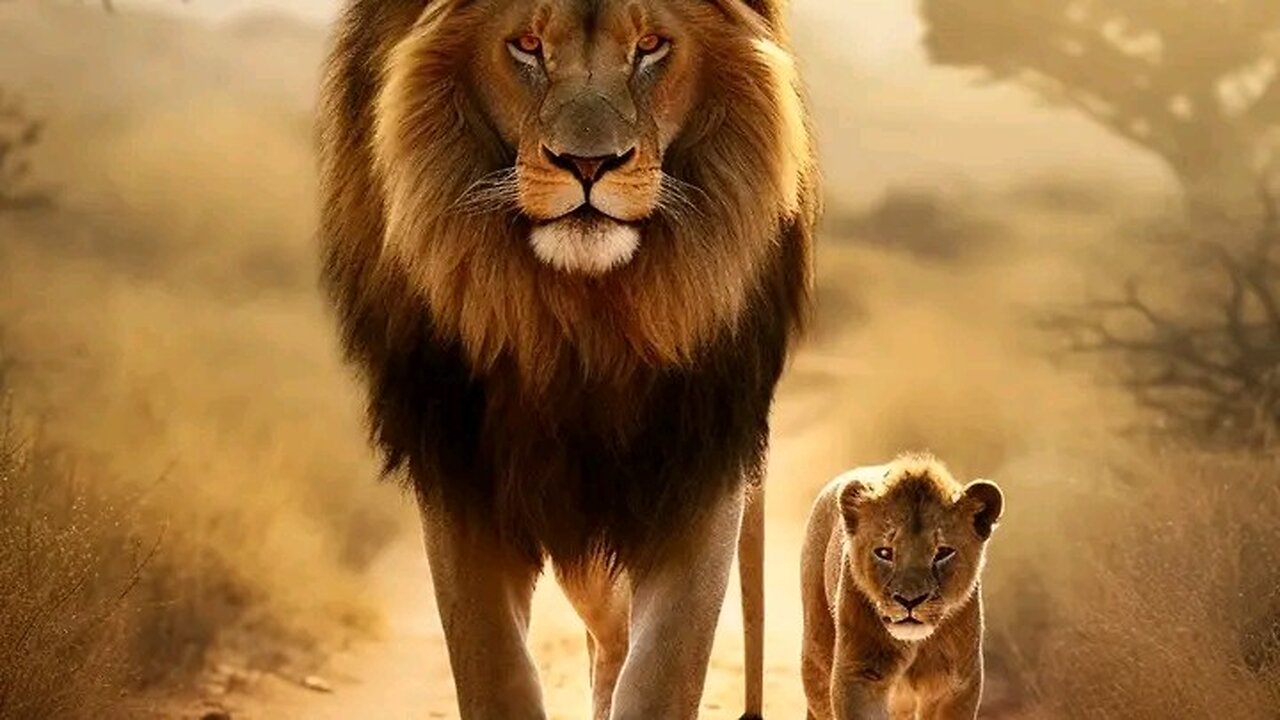Premium Only Content

wildlife
Animals lead fascinating lives filled with unique behaviors, adaptations, and social structures. Here are some key aspects of animal life:
### 1. **Habitat**
- Animals live in various environments, including forests, deserts, oceans, and grasslands. Each habitat influences their behavior and physical adaptations.
### 2. **Diet**
- Animals are categorized based on their diets:
- **Herbivores**: Eat plants (e.g., cows, deer).
- **Carnivores**: Eat other animals (e.g., lions, sharks).
- **Omnivores**: Eat both plants and animals (e.g., humans, bears).
### 3. **Social Structure**
- Many animals live in groups, such as packs, pods, or colonies. Social structures can provide protection, enhance learning, and improve hunting success.
### 4. **Reproduction**
- Animals have various reproductive strategies:
- **Live birth**: Many mammals give birth to live young.
- **Egg-laying**: Birds, reptiles, and amphibians lay eggs that develop outside the mother's body.
### 5. **Communication**
- Animals communicate through vocalizations, body language, and chemical signals. For example, wolves howl to communicate location and status within the pack.
### 6. **Migration**
- Some species migrate seasonally to find food, breed, or escape harsh weather. Examples include birds flying south for the winter and wildebeests migrating across the Serengeti.
### 7. **Adaptation**
- Animals adapt to their environments over generations. This might include physical changes (like thicker fur in colder climates) or behavioral changes (like nocturnal habits to avoid predators).
### 8. **Conservation**
- Many animal species are threatened by habitat loss, climate change, and pollution. Conservation efforts aim to protect endangered species and their habitats.
Animals demonstrate incredible diversity and complexity in their lives, making the study of their behaviors and interactions both intriguing and essential for understanding our ecosystems.
-
 36:28
36:28
TruthStream with Joe and Scott
1 day agoMark Attwood joins TruthStream in Ireland!
11K31 -
 2:13:30
2:13:30
Side Scrollers Podcast
1 day agoUK Introduces MANDATORY Digital ID + Dallas ICE Shooting BLAMED on Gaming + More | Side Scrollers
197K57 -
 LIVE
LIVE
Lofi Girl
2 years agoSynthwave Radio 🌌 - beats to chill/game to
140 watching -
 2:26:44
2:26:44
Tundra Tactical
9 hours ago $17.97 earned🎉 Pro-2A Party LIVE! | Zeke Stout Joins The Show With Tacoma Tactical
24.5K1 -
 2:36:47
2:36:47
BlackDiamondGunsandGear
10 hours agoAFTER HOURS ARMORY / The LEFT are Recruiting / Join the Leftist Gun Club?
13.7K8 -
 16:07
16:07
Ken LaCorte: Elephants in Rooms
14 hours ago $4.36 earnedWhy firefighting got political
22.9K5 -
 8:31
8:31
Rethinking the Dollar
19 hours agoBitcoin Secrets Nobody Talks About!
14.8K7 -
 2:36:47
2:36:47
DLDAfterDark
9 hours ago $5.77 earnedIs The Left Recruiting To KILL Conservatives? Hey Fascist, CATCH!
15K4 -
 22:53
22:53
Jasmin Laine
1 day agoParliament ERUPTS After "WORST Decision EVER!"—Carney Left SPEECHLESS by SHOCKING Report
39.6K83 -
 11:50
11:50
Mrgunsngear
1 day ago $11.85 earnedSteiner MPS Enclosed Red Dot: Better Than The ACRO P2? 🔴
41.7K19